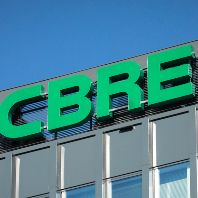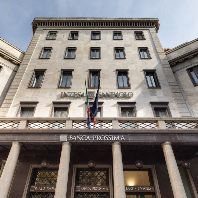Commercial real estate investors from Germany remain significant players in the European property market, but are increasingly focusing on their home market, according to the latest data from CB Richard Ellis (CBRE).
Germans were the second largest players in the European property investment market in the first half of 2011, accounting for 16% of total real estate investment activity in Europe. However, German investors have become far more focused on the strong economic fundamentals and resulting opportunities in their home country, rather than cross-border markets.
Many investors consider Germany's property investment market as stable and prosperous and are therefore increasingly targeting this market. Nine of the 10 largest deals by German property investors took place in Germany in H1 2011, composed primarily of office and retail deals.
Mirroring investors' preferences for prime German assets, the maximum loan size in Germany doubled to 200 million in a single quarter, with competition between lenders to finance prime transactions in this core market allowing Germany to defy the trend of tightening lending conditions that has been spreading across Europe.
In particular, German open-ended funds reduced cross-border acquisition activity, buying just 647 million worth of real estate in H1 2011, compared with 1.25 billion in H1 2010. These funds have been much more active in their home market in 2011, while at the same time being substantial net sellers in the UK, Belgium, and Sweden.
The significant fall in German activity in Europe coincides with an increase in the level of trading by investors from the US. Investors from the US alone accounted for 22% of all cross-border investment in Europe in H1 2011, (H1 2010: 16%). While equities continue to come under pressure, commercial real estate remains an attractive asset class for US investors within a well-diversified, multi-asset institutional portfolio.
Jonathan Hull, Head of EMEA Capital Markets, CB Richard Ellis, commented: "With high levels of economic uncertainty in Europe at present, investors remain cautious. This is benefitting the Nordics and Germany in particular, where fundamentals are considered to be robust and real estate investment remains strong.
"Investors continue to focus on the prime end of the market while assets further out on the risk spectrum - secondary markets, peripheral locations, 'value-add' will remain less desirable until the economic uncertainty is reduced.
"Property investment is expected to remain dynamic in Germany given the large-scale transactions that are planned for the second half of the year. Not only are numerous core and core-plus investments expected, more sales of properties from insolvency estates will take place, particularly in the retail sector, like the recent sale of the Neumarkt Galerie in Cologne."
Natale Giostra, Head of UK & EMEA Debt Advisory, CBRE Real Estate Finance, added: "The concerns over sovereign debt and slowing economic growth caused a tightening of lending terms in Q2 2011 across the majority of Europe. There is almost no desire to finance speculative construction and, outside prime, lenders are only prepared to provide capital to borrowers with a proven track record.
"However, lenders are competing to provide debt for prime German assets, allowing the country to buck the longer term trend, with many types of buyers seeking to place capital there."
Direct property investment activity in Europe totaled 25.7 billion in Q2 2011, a fall of 11% on the previous quarter, amid growing concerns about slowing economic growth in the region. This is broadly in line with the level of transactions in Q2 and Q3 2010.
The big winners in Western Europe in terms of property investment activity in Q2 were Germany and much of the Nordic region where strong economic growth over the last two years has attracted a growing share of regional investment.
Investment turnover in Germany reached 5.6 billion in Q2 2011, accounting for an above average 20% of the European tot















